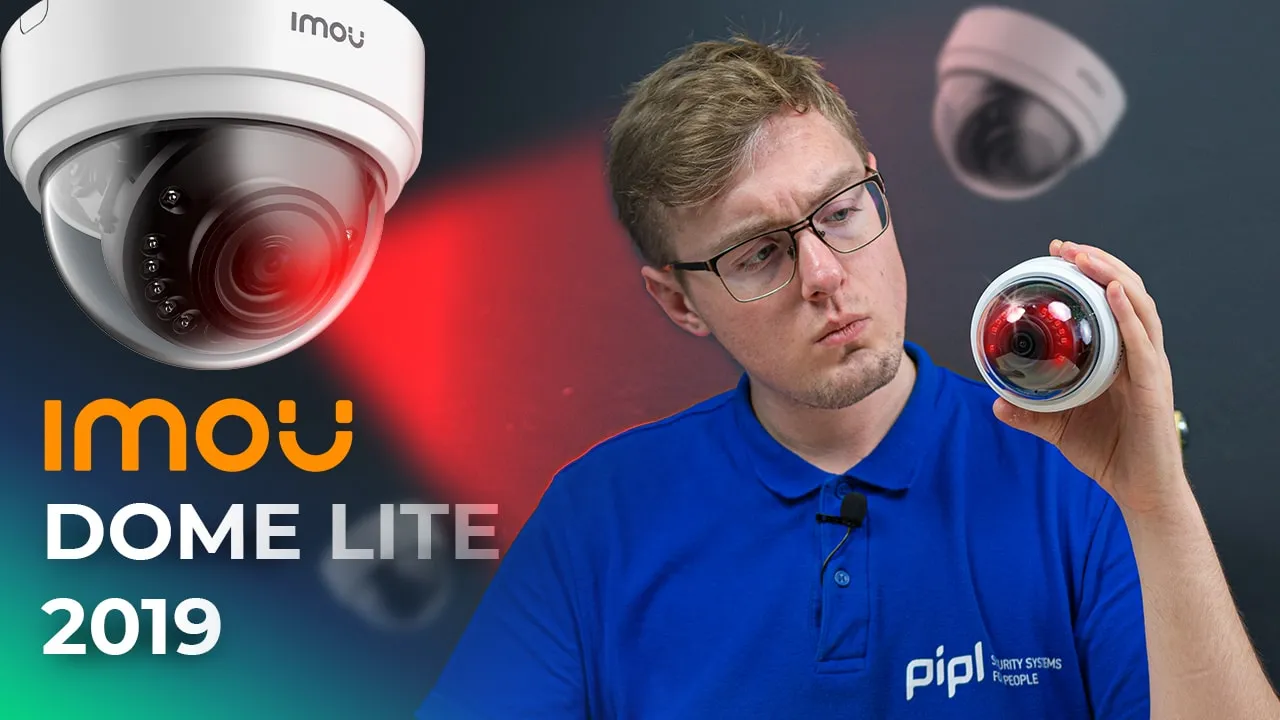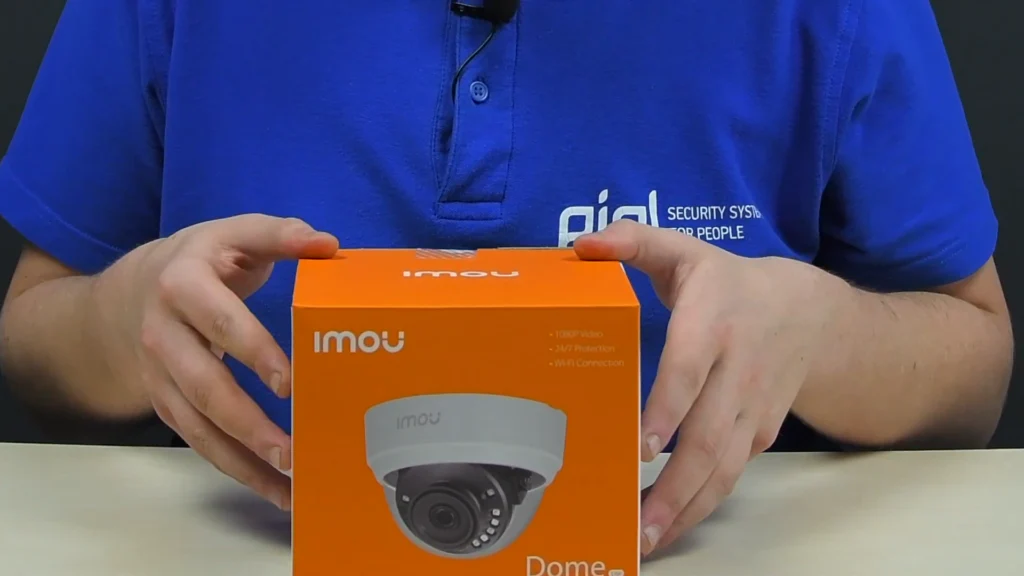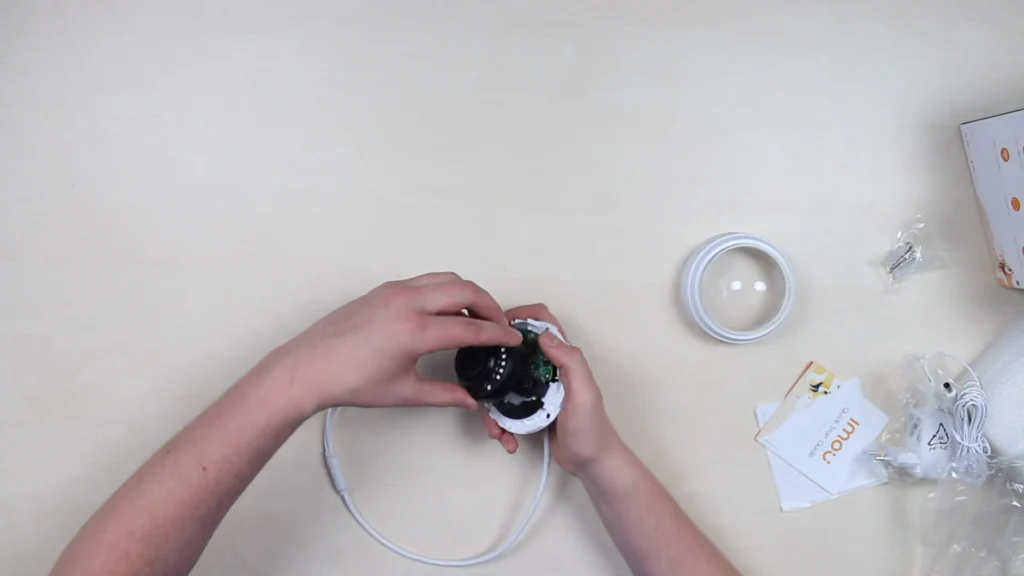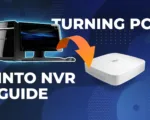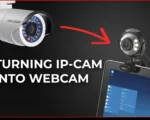This is the first dome-type camera yet introduced in Dahua’s IMOU product line. There were a lot of different variations on a Pan-tilt type camera, like Ranger, Ranger Pro, and Ranger Z from IMOU. There were bullet-type cameras, battery-powered ones, Cell Pr,o and even a Floodlight cam. Finally, we have a Dome-type IMOU IPC-D22P of a Lite series, launched in 4 versions with different recording quality and different-sized lenses. For a review, we’ve got a 2.8 mm lens with a 2 megapixel 1080p recording quality version. Today, we’ll go through unboxing, specs, video quality test, features, and a comparison against an Ezviz C4W dome camera.
Unboxing / Appearance
– 1x Camera;
– 1x Quick Start Guide;
– 1x Power Adapter;
– 1x Screw Package;
– 1x Installation Position Map;
In the cutout on top of the box we have a pack of screws with anchors for fastening the thing and a 12V power adapter. After removing the top foam layer, we reveal a camera. Also within a package, we have a quick start guide and a mounting sticker. Now, the camera itself. After taking off a lens protector, we’ll begin with a tail, which consists of a 12V. power supply and RJ-45 LAN cable inputs. The body is made entirely out of plastic. On top, we have a 1080p camera module and 12 infrared LEDs around it. That one in the middle is a camera status LED indicator. Right now, you see a video taken on this IMOU Dome D Twenty-two P camera and extracted to this video with no adjustments made.
Like if you were watching this camera’s stream from your phone. To me, it looks quite decent for this class of cams and a price tag, but then there comes footage taken on the Ezviz C4W 1080p Dome camera for a comparison. I don’t want to comment on what I see this time, instead I want to ask you which version you like more and why? Let us know in the comments. What’s pretty cool, though, is that we can easily turn and snap off the cover to reveal all internal parts. There’s a reset button and a microSD card input onboard. So, this was done to allow access to the reset button and microSD, plus you can adjust the camera module inclination angle, because this camera element can be turned around and tilted, so you can fix the required view angle. Now let’s talk about specifications.
Specification / Features
IMOU Dome Lite |
|
| Video | FullHD 1080p / 30 FPS. |
| View Angle | 135° for 2.8 mm / 103.8 for 3.6 mm |
| Compression Rate | H.265 |
| MicroSD Capacity | up to 128GB |
| Night View | 20m (65ft) Distance |
| Motion Detection | Yes, software-level |
| Network | Wired & Wireless Wi-fi |
| IR LED | Yes, 12 Infrared LED lights |
It isn’t much to say about the cam this time. 2 megapixel 1080p camera module with a 135° view angle for the 2.8 lens version, and a 103.8° for the 3.6 lens, able to record in 30 FPS for both versions. A lens size affects the available view distance and a view angle, where with the 2.8 version we’ll get a wider 135°, but a maximum view distance of 37 meters. On the other hand, for a 3.6 mm version we’re having more narrower 103.8°, but a bigger view distance of 53 meters, so choose wisely, based on the install location.
As you can tell, there’s no bulging out passive infrared sensor on the body, meaning that we don’t have a true human and motion detection, but a software level only, which I’m not a fan of. Because it doesn’t spot a temperature close to a human body heat in sight, but just spots an image change, which can cause a ton of false alarms. But returning to good stuff, IMOU keeps adding support for High efficiency H.265 compression, and this Lite series Dome camera is not an exception. Good job, IMOU, thank you. But in comparison to Ezviz cameras, IMOU cams mostly support twice less microSD capacity, here it is 128 GB. maximum.
But if we’ll do a bit of math here, if H .265 compressed videos take 2 times less storage space, IMOU wins, regardless of which type of storage you are using, either it’s a cloud, microSD or a network recorder because except reducing a storage space needed for a recording, you’re also getting a decreased bandwidth. So these 12 infrared lights provide us a Night View distance of 20 meters, or 65 feet, and this is what makes this cam stand out. Let’s see a video, taken on an IMOU Lite Series dome camera during night mode when a camera has to switch to it, and now I’m also putting next to it an Ezviz C4W camera for a comparison, I didn’t apply any adjustments to the image, what you see is pure.
And to me, they both look good, but Ezviz gives me more details, while the IMOU version looks more natural. Let us know what you think of it, and we are moving to the activation.
Activation / Connection
Whatever the camera you are holding in your hands, if it is an IMOU-branded one, its activation and control happen via the IMOU app, available for free in the App Store and Google Play. And the exact process is no different and is made very convenient:
– Install IMOU App
– Power up the camera / 12V Power Adapter
– Wait till the LED flashes blue
– Scan QR code / Add camera
– App Menu / Snapshot / Recording / Video History / Settings
Watch Full Video Review With Demonstration on YouTube!
Conclusion
Yet, there’s no real motion detection and human detection, there’s no PIR intended for that purpose, and it has only a software-level image change detection, and in my opinion, every 2019 security camera must have it. Though considering such a low price tag and regarding the feature set, which main points are H.265, 20 meters of night view distance, and 12 infrared lights, this lite dome camera is okay, but a bit ambiguous.
